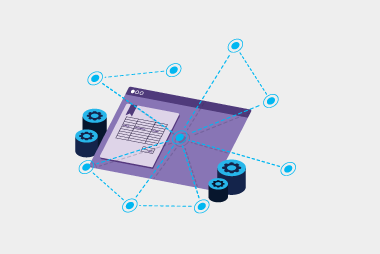What is PINT A-NZ Billing?
It’s a new specification that is being mandated by the local Australian and New Zealand Peppol authorities. It’s a slight change from the existing A-NZ Peppol BIS 3.0 specification we’ve used since 2018. It mainly impacts:- The UBL file that is exchanged between Access Points (and in some cases, onto the software)
- The registration and lookup of receiving capabilities in the SMP (service metadata publisher).
What are the changes?
There are four main changes in the new PINT A-NZ Billing specification:1. New identifier values
Basically, in the UBL file that Access Points exchange between each other, there will be a field in there that specifies the specification that message is using – either the A-NZ Peppol BIS 3.0 specification or the new PINT A-NZ Billing specification.2. Wildcard scheme
At the moment, each organisation registered has specific information registered in the SMP (service metadata publisher), which is basically the master registry for Peppol. Usually it’s your Access Point who will manage the registration for you. It holds information such as:- your identifier (like your ABN, NZBN or GLN)
- the identification type (whether it is an ABN, NZBN or GLN)
- the message(s) you can receive (such as invoices, credit notes, business response messages).
3. Business rules
Basically, the rules in the specification have been tidied up – some identifiers of the rules have changed, some rules have been rationalised and redundant rules have been removed. Also, rules that used to have a ‘warning’ have been removed, given they added little value.4. Publication of the specification
The new specification is published on the OpenPeppol website like the previous specification was, but this one is documented in a better, more usable format, with the ability to drill down via semantic or syntax definitions and users can easily navigate between related objects.Why are these changes being made?
Many regions have their own Peppol specifications designed for the local market and practical use cases within that region. For example, the EU, Singapore and Japan have their own specifications. The idea behind the new PINT specification is to achieve interoperability between regions. The new PINT standard is an umbrella specification that can be specialised to create new specialisations.What’s the practical impact for those sending and receiving eInvoices?
From what we’ve seen, the change is usually being made by the party who produces the Peppol UBL eInvoice, or consumes it. We’ve seen these two examples:1. The accounts payable/receivables software exports/imports the Peppol UBL file
In this case, the software may need to make changes on their side, given they export/ingest the Peppol UBL file, which is the file affected by this change.2. The Access Point maps the Peppol UBL file to/from the Peppol UBL to the accounts payable/receivable’s software’s native format
In this case, it’s usually the Access Point who can make the change and build this change into the map that goes to and from the sender and receiver’s software. Of course, whichever scenario you’re in, we always recommend thorough testing before going live.What are the dates to be aware of?
If you’re receiving accounts payable eInvoices, you must be able to receive the new PINT A-NZ specification by Friday the 15th of November 2024. Senders can start sending eInvoices in the PINT A-NZ specification from that date, but must send them in that format from the 15th of May 2025.Does this mean you can send and receive cross-border Peppol eInvoices now?
If your Access Point and software supports receiving eInvoices in different regions’ specifications, the answer is yes. As for sending Peppol eInvoices overseas, it depends on what your customer’s Access Point and software can support.Want to learn more about Peppol PINT A-NZ Billing requirements? Fill in the form below to get in touch with our experts.Request a call
Chat with one of our experts
Just fill out your details below and we'll be in touch within one business day.

